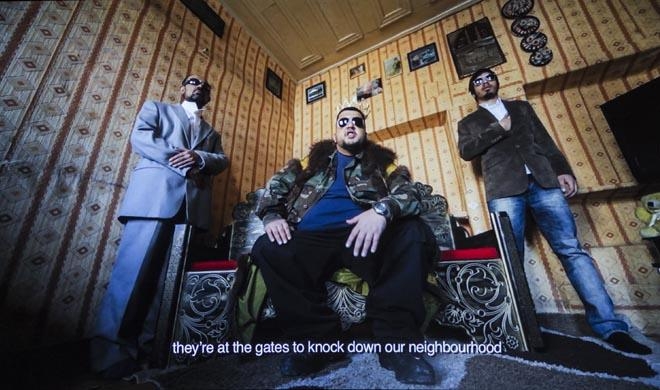The 13th Istanbul Biennial, subtitled Mom, Am I Barbarian? after Turkish poet Lale Müldür’s book by the same name, was supposed to take place entirely in public spaces, including Gezi Park and Taksim Square. Instead, it’s been reduced in size by, some say, about 80 percent and sequestered in four indoor venues: the harbourside warehouse Antrepo 3, the Galata Greek Primary School nearby, the nonprofit Salt Beyoğlu and private foundation Arter on the city’s main shopping street.
What happened? Chief curator Fulya Erdemci claims that following the Gezi Park protests earlier this year (still flaring when the show opened), she didn’t want to collaborate with people who tear-gassed their own citizens. Others say she tried and was either stonewalled or negotiated badly. Whatever, here is a biennale you can see (at least superficially) in a day, and one inevitably riven with paradoxes.
Art, here, inevitably pales beside actual dissent and can often only poeticise it
It would be fatuous to mount an apolitical art show in today’s Istanbul, and this biennial’s connecting thread is the diversity of potential uses for public and social space. At Antrepo 3, one moves between Thomas Hirschhorn’s room-bisecting timeline of his outdoor interventions; LaToya Ruby Frazier’s furious photographs of decay in her hometown of Braddock, Pennsylvania; Santiago Sierra’s hyperpragmatic proposal, adapted for Istanbul, for a Conceptual Monument (2012) for Leipzig (make the monument invisible, give the money to the citizens); and historical documentation of Mierle Laderman Ukeles’s propositional interactions with New York blue-collar workers (eg, thanking sewer workers one by one, asking factory workers to designate an hour a day as art).
The outdoor world figures as a flexible laboratory, annexable and adaptable. The irony is that space is being annexed, constantly and forcibly, in Istanbul. Gentrification and neoliberal urban policies – converting the city centre into a Dubai-like, hypercontrolled mall environment, bulldozing communities so that hotels and middle-class housing can be built there – are what the protests have been about.
Art, here, inevitably pales beside actual dissent and can often only poeticise it, even if harshly. At Arter, Cinthia Marcelle’s video Confronto (Confront, 2005) shows a growing team of fire jugglers performing before a line of cars at a stop sign. When the light turns green, they refuse to move, and furious horns fill the air; fade to ominous black. Yet Arter is effectively owned by Koç: the massive conglomerate that is also, controversially, sponsoring the biennial and against whose construction work the protests were directed.
Back at Antrepo 3, Halil Altındere’s incandescent music video Wonderland (2013) stars a youthful hip-hop crew from Sulukule, a Roma neighbourhood decimated by gentrification, and Koç has facilitated the work being there. In the Greek School, various escapes from the pressures of the real are proposed, from Agnieszka Polska’s fictionalised video of young Poles taking a mythical drug in India, to Basim Magdy’s deliberately nonsensical filmic and photographic juxtapositions of text and image.
Watching Jean Rouch’s famous ethnographic film Les Maîtres Fous (The Mad Masters, 1955), with foamy-mouthed Africans enacting, while in a trance, a tragicomic parody of their oppressors’ behaviour, one thinks inevitably of how brutalising authority distorts subjectivity, and is reminded of Altındere’s desperate young rappers.
Within massive constrictions and contradictions, this biennial isn’t exactly a failure. The curating is tight and smart, works playing off each other effectively, with sharp subthemes (the relation of social space to literature and the poetic, for example) rising and falling as one traverses it. But it feels impossibly compromised – the diminution of the project testifying, as much as any single work, to what is happening in Istanbul right now. As one local academic opined to me, ‘This year’s biennial might as well not exist.’
This article was first published in the November 2013 issue of ArtReview Asia.
